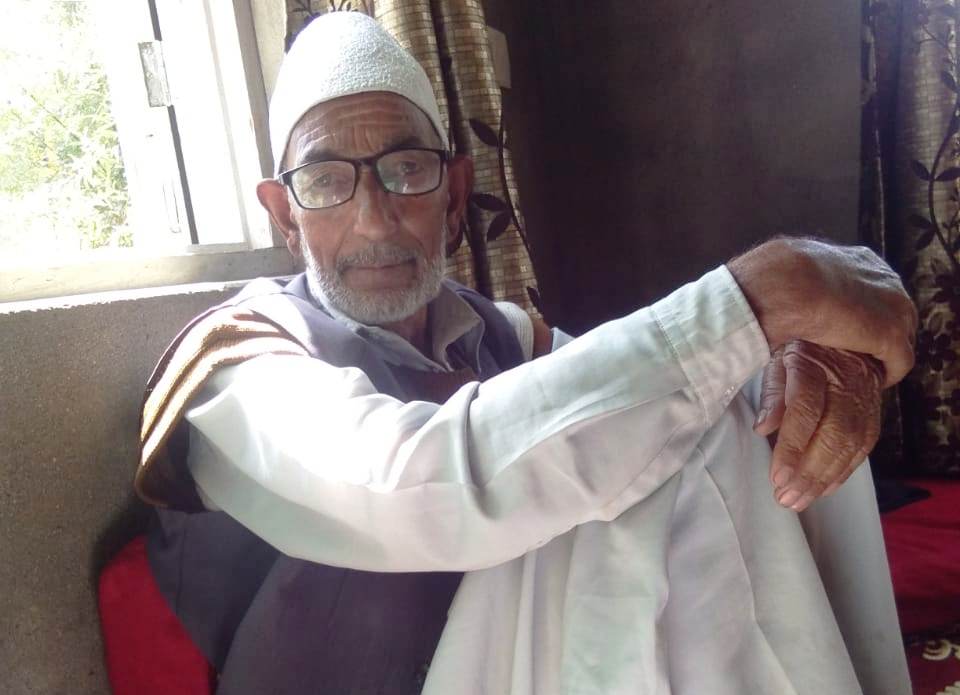How Capmaker’s Defiance in Distress Shaped Kashmir’s Conical Cap

Bisma Farooq is a Staff Writer at the Mountain Ink.
If creative marketing of some caps—like Afghani or Ertugrul headgears—can make them global products, why can’t the same be done to conical caps of Kashmir?
At the start of Seventies, a young farmer in Kashmir’s Sonawari belt was regularly lifting his moist eyes towards the sky.
It was the year of drought in Kashmir and his paddy fields were craving for water. The collective beseeching act of his community to seek divine intervention became the only hope after chief minister Mir Qasim’s government failed to come to their rescue.
That young farmer from the Naidkhai area of Sonawari in district Bandipora was young Mohammed Ramzan Dar who shortly understood that either he has to wait for help and go hungry, or be realistic and change his occupation for the sake of his family.
Half a century later, that young man turned greyed-bespectacled septuagenarian is describing those drought times with a pleasing smile.
That distressed period made him one of the notable craftsmen whose sustained efforts not only helped him survive tough times, but also shape the craft.
Support Our Journalism
You are reading this because you value quality and serious journalism.
But, serious journalism needs serious support. We need readers like you to support us and pay for making quality and independent journalism more vibrant.
Walking through the same fields that once left no other option for him than to shift his line of living, Dar recalls his twenty-something youth bitten by the hard reality. But to find a way, the young Dar had approached an unassuming artist in his neighbourhood. He knew that the man next door wouldn’t turn him away.
“He was one of the fine masters of his time whose hands crafted most beautiful caps,” Dar recalls while ambling in the lately-harvested paddy fields. “He became my teacher.”
For days, Dar learned the art without letting his dry fields distress him any further. A fortnight later, he needed no more training as the young man started making caps for his own customers he curtly made out of his goodwill and social approach.
Those witness of his defiant act term it a commoner’s routine resolve to fight his daily survival burdened by myriad miseries. Others in his community were still craving for the chaos to end when Dar had already made his own course through it.
“Distressing times teach you a lot,” Dar says with a familiar wisdom elders effortlessly share with their young counterparts. “More than anything else, such times demand some creativity on your part. And it’s only creativity that can take you out of any crisis and confusion.”

He would initially work as a farmer by day and a capmaker by night in his lamp-lit room. But when fields, especially during those drought years, disappointed him, he would also work as a labourer. However, it was his artist that was getting noticed and rebranding this quintessential Kashmiri farmer in an era of the shrilling street plebiscite movement.
The young man’s defiance soon earned him orders from different parts of his hometown. His master’s ailing health diverted additional orders to his cart. With Naidkhai and adjoining areas still struggling with famine-hit farms, this farmer was now a new name in town.
Nostalgic Dar recalls the days when the passion for his caps was high. The caps depicted the symbol of being a rich Kashmiri.
“Everyone was not able to afford the cap and still not everyone can afford to wear it at the cost of Rs. 5,000,” he says.
The cap called ‘Sozne toep’ is conical in shape and is made by sewing four pieces of triangular cloth together. Each piece of cloth is crafted with nylon thread and a needle. Every piece takes almost 3-4 days of work and the whole cap completes in almost two weeks.

“It needs patience and dedication,” Dar says. “But this artwork gave me a good name and financial stability. I was a regular working artist until my eye got affected and doctors suggested surgery. But sadly, my work speed wasn’t the same after the surgery.”

Before his fallen sight, Dar’s clientele had become big. “By the grace of Almighty, it didn’t take me much time to cater to customers from all over Kashmir as well as outside,” he says.
There’re some unforgettable moments during this period making Dar a well-sought after craftsman of his time in Kashmir.
One day, a customer bought eight caps from him—saying that he works in Saudi Arabia and that his friends liked the caps so much that they insisted him to get Kashmiri caps for them.
Recalling these moments in the middle of the golden paddy fields makes him smile. But with that smile comes a concern as well. Times have changed, he says, so have tastes.
But if creative marketing of some caps—like Afghani or Ertugrul headgears—can make them global products, why can’t the same be done to conical caps of Kashmir?
“It’s just a matter of smart and sustained marketing to make our local product global,” the seasoned skillman says. “And it’s not that difficult. Let me tell you, my work was adored in other parts of the world through my customers. But what lacked was the collective marketing will to make it an international product.”
Mountain Ink is now on Telegram. Subscribe here.
Become Our Ally
To help us strengthen the tradition of quality reading and writing, we need allies like YOU. Subscribe to us.










